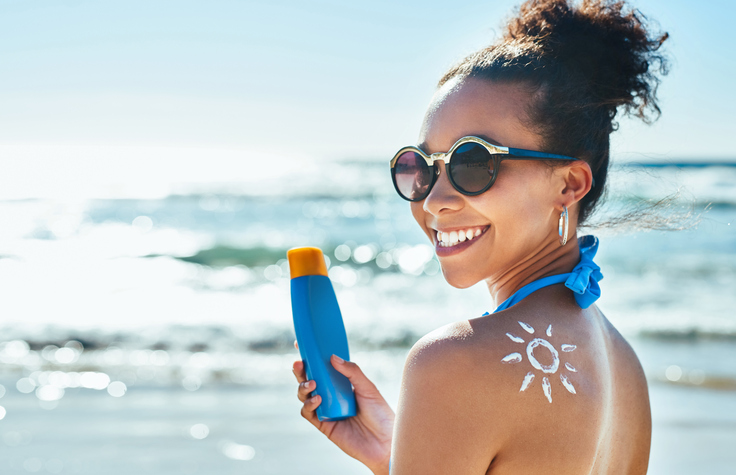A beginner’s guide to sun protection factor (SPF)
by Karen Rollins Dec 3, 2018

The number of people being diagnosed with non-melanoma and melanoma skin cancer has been increasing over the past decades, according to the World Health Organization.
People with fairer skin have less natural protection against the sun, i.e. melanin, so they are more at risk from damage caused by intense sunlight than people with darker tones.
However, the WHO warns that “excessive exposure to intense sunlight can damage all skin types (and) the risk of eye damage and heat stroke is the same for everyone.”
The best way to protect your skin is to use sunscreen with a high SPF but with so many products on the market it can be hard to know which one to choose, that’s why we’ve put together this beginner’s guide.
What is SPF?
SPF stands for ‘sun protection factor’.
All sunscreen labels must show the numerical value of the factor they provide as an indication of the level of protection against ultraviolet (UV) light. The higher the factor number, the higher the level of protection.
The SPF on sunscreen indicates the length of time that your skin is protected from sunburn, depending on your skin type. For instance, if you start getting sunburned after three minutes in the sun without any sunscreen on, applying a sunscreen with a sun protection factor of 30 will protect you for three minutes x 30, or 90 minutes, before you begin to burn.
Does SPF protect against UVA and UVB?
UVA contributes to premature skin aging and some risk of skin cancer whereas UVB causes reddening of the skin and sunburn and is responsible for a higher risk of skin cancer.
The SPF rating on sunscreen indicates the level of protection against UVB while “broad spectrum” marked on the sunscreen label indicates that the product also has an effect against UVA.
The higher the SPF number, the more protection it will offer, but no sunscreen blocks out all UV and all products need regular reapplication.
Is SPF in make-up enough?
Experts warn that you are unlikely to get enough sun protection from make-up with SPF because no one uses enough moisturiser or foundation to get effective coverage, therefore you should always apply a separate sunscreen under your make-up.
How often should I apply sunscreen?
A broad-spectrum sunscreen of SPF 15+ should be applied liberally and re-applied every two hours, or after working, playing or exercising outdoors.
Some sun lotions provide a level of water resistance but none of them are completely waterproof, so you must reapply after swimming. You could also help to take care of the environment by using a brand that doesn’t harm sea life or coral reefs.
Anything else?
SPF in sunscreen offers some protection but it should never be used as an excuse to prolong your exposure to the sun.
A little bit of sunlight is good for you to top up levels of vitamin D, but in general you should avoid being out at the hottest time of the day between midday and 3pm especially during summer months.
You should also limit your time in direct sunlight to about five to 15 minutes.
Sources: World Health Organization / Medical News Today / Sheerluxe / Nivea








